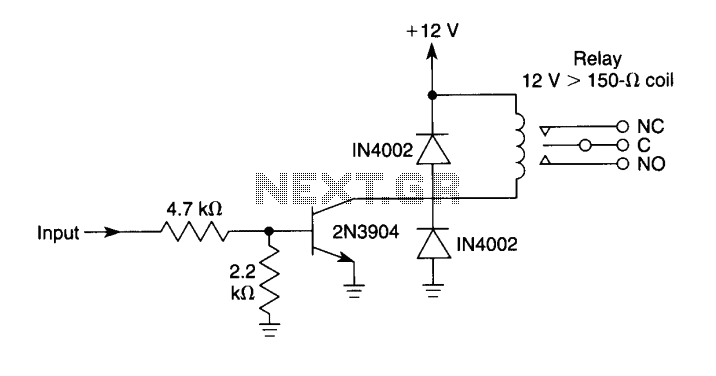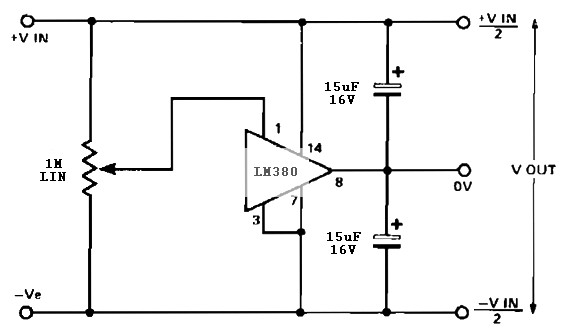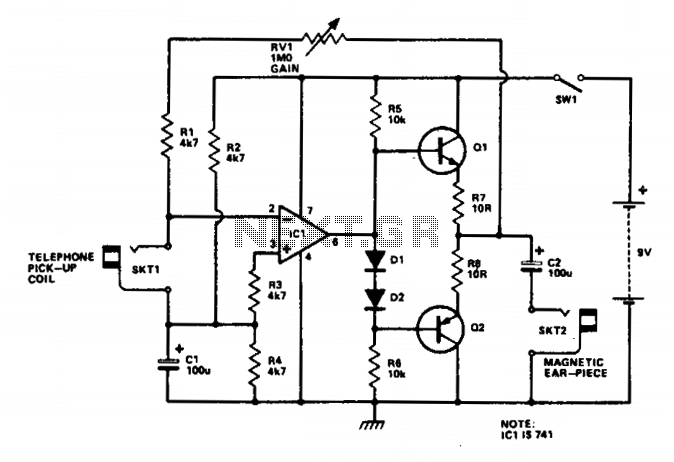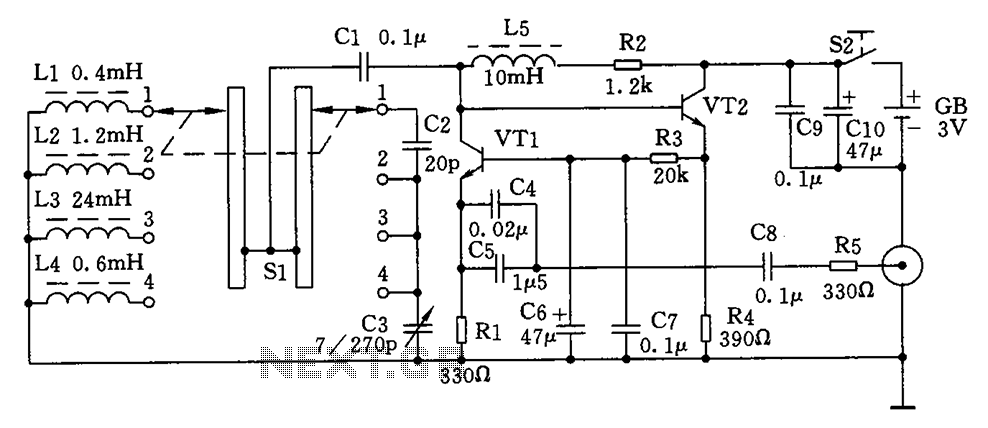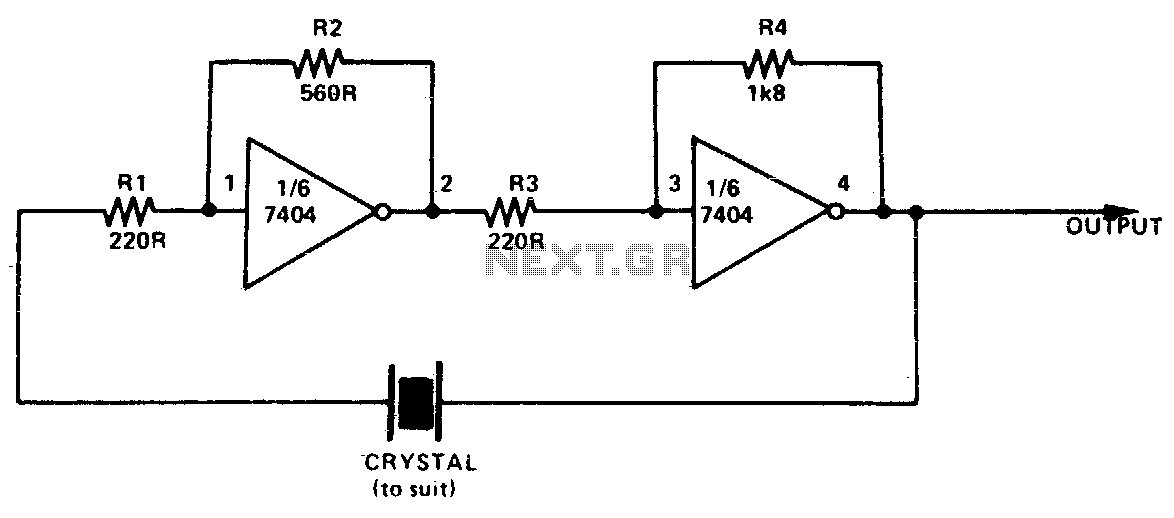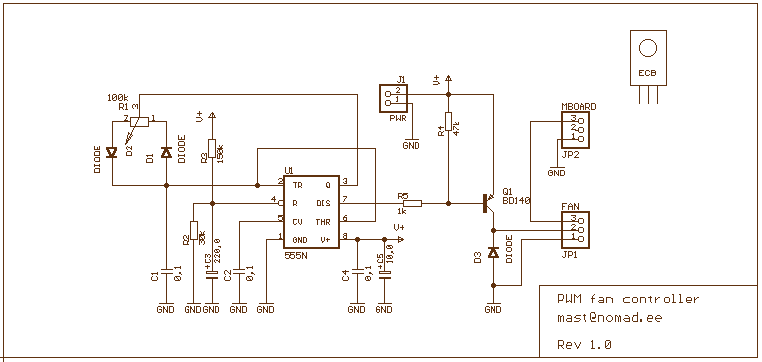
Simple Diode Curve Tracer

Suitable for matching diodes or examining the VI characteristics of two-terminal devices (such as diodes), this circuit is designed for laboratory use. Resistors R1 and R2 can be increased in value, and a higher voltage transformer can be utilized for testing at higher voltages using this principle.
The circuit in question serves as a versatile tool for analyzing the voltage-current (VI) characteristics of two-terminal devices, primarily diodes. The fundamental operation involves applying a varying voltage across the device under test, allowing for the observation of current flow and the corresponding voltage drop. This is essential for understanding the behavior of diodes under different conditions, including forward and reverse bias.
To implement this circuit, a transformer is typically employed to step up the input voltage to the desired level. The transformer must be selected based on the maximum voltage requirements of the devices being tested. Additionally, the resistors R1 and R2 play a critical role in setting the current limits and ensuring safe operation. By increasing the values of these resistors, the circuit can accommodate devices with higher current ratings without risking damage to the components or the device under test.
The circuit can be further enhanced by incorporating measurement devices such as ammeters and voltmeters, which can provide real-time readings of current and voltage, respectively. This allows for precise plotting of the VI characteristics on a graph, facilitating a deeper analysis of the diode's performance.
Furthermore, additional features such as variable resistors or potentiometers can be integrated into the circuit to allow for fine-tuning of the test conditions. This adaptability makes the circuit suitable for a wide range of laboratory applications, from educational demonstrations to advanced research in semiconductor behavior.
In summary, this circuit is an essential tool for electronics laboratories, providing a reliable method for evaluating the characteristics of diodes and similar two-terminal devices through adjustable voltage and current settings. Suitable for matching diodes or examining VII characteristics of two terminal devices (diodes, etc.), this circui t should be handy for lab use. Ri and R2 can be increased in value and a higher voltage transformer can be used for higher voltage test using this principle.
The circuit in question serves as a versatile tool for analyzing the voltage-current (VI) characteristics of two-terminal devices, primarily diodes. The fundamental operation involves applying a varying voltage across the device under test, allowing for the observation of current flow and the corresponding voltage drop. This is essential for understanding the behavior of diodes under different conditions, including forward and reverse bias.
To implement this circuit, a transformer is typically employed to step up the input voltage to the desired level. The transformer must be selected based on the maximum voltage requirements of the devices being tested. Additionally, the resistors R1 and R2 play a critical role in setting the current limits and ensuring safe operation. By increasing the values of these resistors, the circuit can accommodate devices with higher current ratings without risking damage to the components or the device under test.
The circuit can be further enhanced by incorporating measurement devices such as ammeters and voltmeters, which can provide real-time readings of current and voltage, respectively. This allows for precise plotting of the VI characteristics on a graph, facilitating a deeper analysis of the diode's performance.
Furthermore, additional features such as variable resistors or potentiometers can be integrated into the circuit to allow for fine-tuning of the test conditions. This adaptability makes the circuit suitable for a wide range of laboratory applications, from educational demonstrations to advanced research in semiconductor behavior.
In summary, this circuit is an essential tool for electronics laboratories, providing a reliable method for evaluating the characteristics of diodes and similar two-terminal devices through adjustable voltage and current settings. Suitable for matching diodes or examining VII characteristics of two terminal devices (diodes, etc.), this circui t should be handy for lab use. Ri and R2 can be increased in value and a higher voltage transformer can be used for higher voltage test using this principle.
